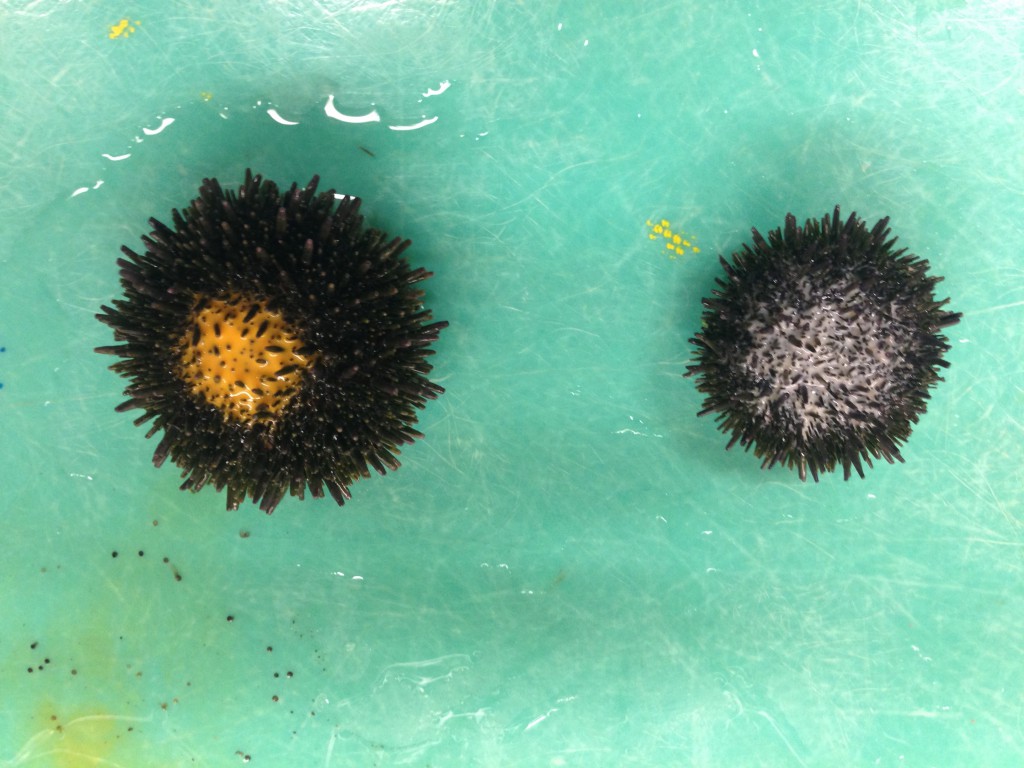On another glorious afternoon low tide the other day, with the help of a former student I collected six purple urchins, Strongylocentrotus purpuratus. Given that we’re in about the middle of this species’ spawning season, I reasoned that collecting six gave me a decent chance of ending up with at least one male and one female that hadn’t spawned yet.
Yesterday, after the urchins had been in the lab for somewhat less than a whole day, I shot them up and waited. Three females began spawning almost immediately (yes!) and one male started a few minutes later. When all was said and done I ended up with four females and two males. It turns out that the largest individual, with a test diameter of almost 10 cm, was a male but didn’t spawn very much at all. I infer from this that he had already spawned in the field before I collected him.

© Allison J. Gong
At the current ambient sea water temperature of 14°C, hatching begins around 24 hours post-fertilization. Early this afternoon I checked on the beakers and they had indeed begun hatching. Sea urchins hatch at the blastula stage of development, when they are essentially a ciliated hollow ball of cells. The cilia allow the larvae to swim, but at this size they are at the mercy of even the weakest current. Thus, for the most part they act as particles, getting carried wherever the current takes them.

© Allison J. Gong
As the embryos hatch, they swim up to the top of the beaker, then move down towards the bottom. I call this “streaming.” At this point in our artificial culturing system the embryos are living in still water without any current, so this behavior is due primarily to their ability to swim. There is probably some interesting physics involved, but I’m not enough of a physicist to figure out what’s going on at that level. But whatever it is, it’s a really cool behavior to watch:
https://www.youtube.com/watch?v=2zIBXMouZRQ
Rather mesmerizing, isn’t it? Each of those tiny orange dots is an individual embryo. Once the embryos hit the water column I pour them off into larger jars and begin stirring them. Right now they’re small enough to swim on their own, but once they start feeding and growing they get heavier and would sink to the bottom without some current to keep them suspended. The contraption we use to stir jars of larvae is a manifold of paddles connected to a motor that moves the paddles back and forth, creating the right amount of current to keep the larvae from settling on the bottom without getting beat up by the turbulence.
Here’s the paddle table in action. It’s a noisy SOB.
https://www.youtube.com/watch?v=LuPveVoq4G4
For now the embryos just hang out in the jars and get stirred. Their first gut, the archenteron, will be visible tomorrow and the larvae will be able to eat on Friday. Stay tuned!

1 thought on “Larvae as . . . particles?”